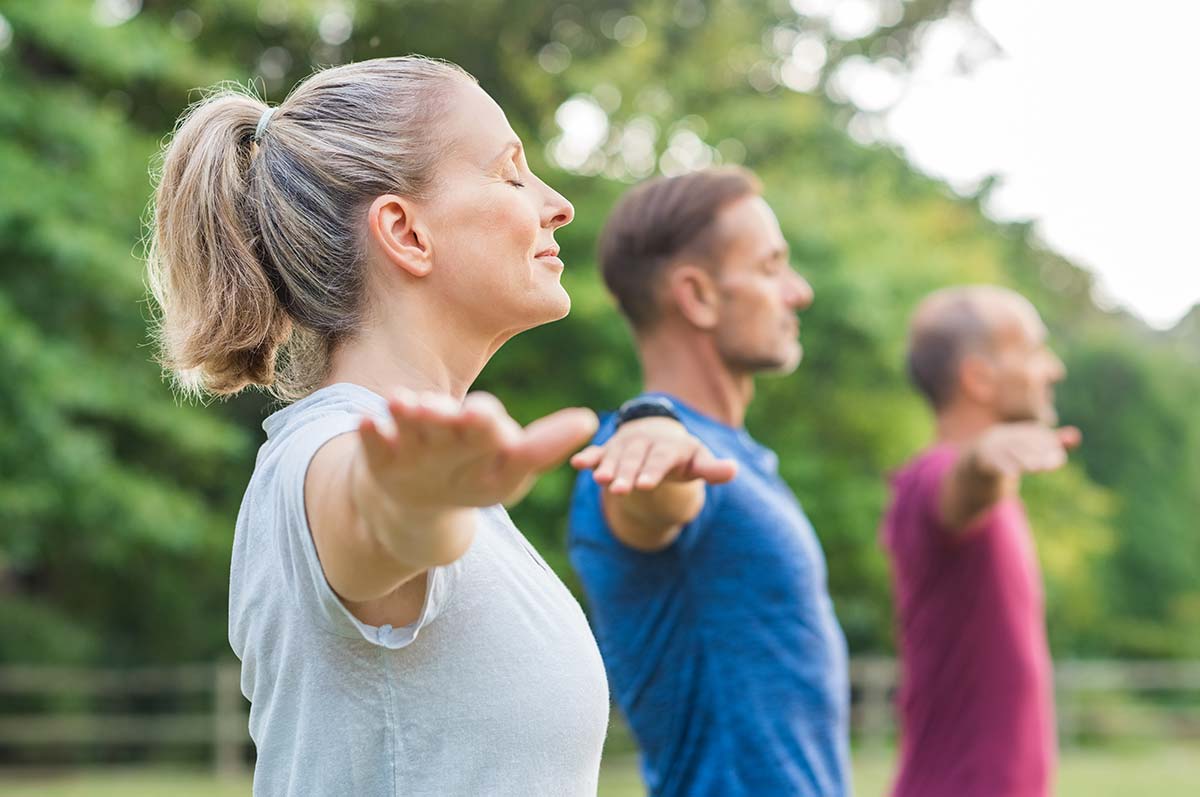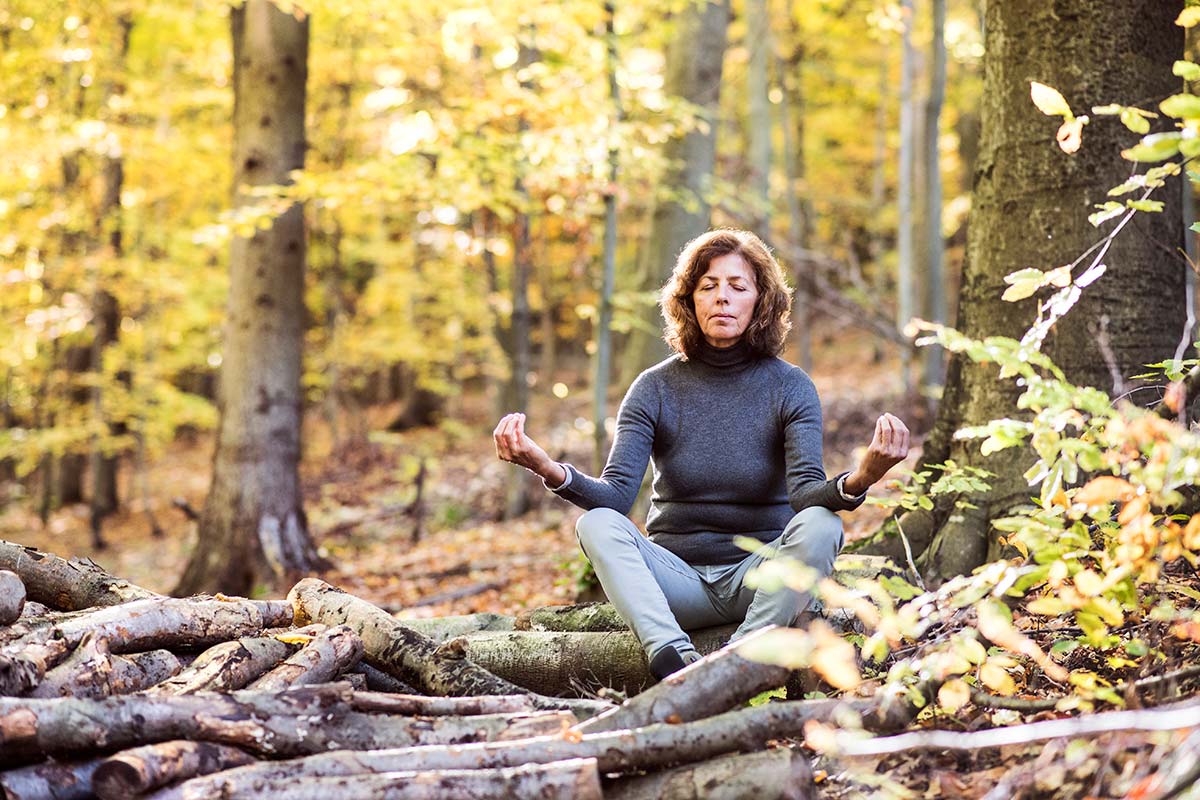Yoga for seniors: benefits and gentle routines for an active life
Written by Stannah

While it’s not possible to completely minimize all the effects that ageing has in our body, there’s plenty that can be done to lessen its impact. For many, Yoga is the answer.
The desire to age in place has become increasingly popular in recent years, particularly among the ageing Baby Boomer generation. While the ambition of seniors is undeniable, the increased risk of illness, chronic pain and psychological distress that accompanies ageing can create some difficulties in achieving this goal. Fortunately, research has discovered that yoga is a highly beneficial activity for seniors that can help counteract these symptoms.
According to Livestrong, yoga’s combination of physical poses and breathing techniques can help mitigate problems such as arthritis, cardiovascular disease, insomnia and even mental health conditions like anxiety. Read on to find out more about it and what benefits you can reap from this ancient practice.
5 Reasons why yoga is a good exercise for older adults
As opposed to some yoga myths, this type of exercise does more than simply help people burn calories and tone muscles: it’s a full mind-body workout, where you get the chance to combine deep breathing, meditation and relaxation techniques, along with exercises that help build your strength, flexibility, balance and resilience.
Yoga exercises can strengthen and tone your supporting muscles to help prevent future injuries and provide relief from chronic pain, so you can avoid the use of mobility aids such as a walking stick or a cane.
As with any physical activity, the most important thing is to pace yourself and exercise at a rhythm that you’re comfortable with. That said, practising gentle yoga on a regular basis has been shown to ease the symptoms associated with several physical and mental ailments.
Let’s take a closer look at the 5 reasons why yoga can help improve common conditions:
1. Increase joint mobility and reduce stiffness
Yoga incorporates gentle stretches that improve flexibility and range of motion. This can help loosen tight muscles and joints, reducing stiffness and achiness. Participants in a Harbor-UCLA Medical Center study reported a decreased need for pain medication after only four weeks of consistent yoga.
Poses recommended: Child’s pose, wrist rotation, back-of-the-hand stretch and joint and finger stretches
2. Improve sciatic nerve pain
Certain yoga poses can target the piriformis muscle, which, when tight, can contribute to sciatic nerve pain. Yoga also strengthens core muscles that support the spine, further reducing pressure on the sciatic nerve. However, if you’re struggling with sciatic pain, you must check with your doctor before you start a yoga regimen.
Poses recommended: Lotus pose, bound angle pose, cobra pose
3. Lower blood pressure
Yoga promotes relaxation and deep breathing, which can help lower blood pressure. Studies have shown consistent yoga practice can be as effective as some medications in managing hypertension since it reduces oxidative stress, one of the major underlying causes of high blood pressure.
Poses recommended: Downward-facing dog, bridge pose, hero pose, legs-up-the-wall pose
4. Enhance mental clarity and wellbeing
Yoga challenges myths about ageing by demonstrating that cognitive decline isn’t an inevitable consequence of getting older. Yoga combines physical postures with mindfulness meditation. This practice can improve cognitive function, memory, and focus. It can also reduce anxiety and depression, leading to a more positive mental state.
Additionally, a University of Illinois’ study found that just two months of steady yoga can improve poor thinking and memory function, a symptom that many previously believed to just be an unavoidable part of the ageing process.
Poses recommended: Dolphin plank pose, bound angle pose, bridge pose
5. Manage stress
The focus on breath and mindful movement in yoga helps manage stress. By calming the nervous system and promoting relaxation, yoga equips you with tools to better handle everyday stressors.
Poses recommended: Child’s pose, boat pose, channel cleaning breath
How to get started with yoga

For beginners who are older and struggle with limited flexibility, deciding to sign up for a yoga class can feel a bit overwhelming: images of young people twisting up like a pretzel with no apparent effort is often the first thing that comes to mind; classes can also have unfamiliar names and poses are frequently referred to by its Sanskrit name (for instance, the Sanskrit name for the Child’s pose is Balasana).
Furthermore, many local gyms offer classes specifically designed to cater to the needs of older adults. Elderly caregivers can also assist by practising yoga and familiarising themselves with the nuances of the activity. This affords a unique opportunity to connect with your loved ones while simultaneously reaping the benefits of yoga: from gentle stretching movements to breathing exercises designed to soothe and energise, there’s something for everyone of every age to enjoy.
Different yoga styles: which one is right for you?
Once you’ve decided that yoga could be just the thing to help you improve your mobility and general wellbeing, deciding which class to attend can be a little daunting, given the several styles of yoga that you can practise. Depending on your level of mobility and flexibility, there are a few types of yoga that can be more challenging than others, so when looking for yoga classes, always consider any physical limitations and illnesses. Let’s take a look at a few different yoga styles in more detail and see which one would best suit you.
- Hatha Yoga: Hatha yoga is a very broad term that refers to multiple styles of yoga that include physical postures in its practice. Considered the original classical yoga, Hatha Yoga is usually recommended for yoga beginners or people that have lost significant muscle tone and flexibility, since it focuses primarily on improving your physical health through a series of poses.
- Chair Yoga: Chair yoga is a gentle form of yoga where you can practise several yoga poses while sitting on a chair. In this form of gentle yoga, poses are often altered and adjusted, so the use of a chair can be incorporated, but basic body movements such as stretching and bending forward are still encouraged. This type of yoga is often preferred by older adults that feel the need to exercise and improve their mobility.
- Water Yoga: Water yoga, also known as Aqua yoga, is a gentle, low-impact type of yoga that allows you to exercise without high impact to your body. Once you go in the water, your body bears less weight, which allows you to perform a series of movements without putting too much pressure on your bones and muscles. One of the general benefits of this type of yoga is the improvement of your flexibility and range of motion.
- Yin Yoga: Yin yoga is a slow-paced form of yoga where you are encouraged to hold your movements or poses for longer periods of time, usually three to five minutes. The main objective of this type of yoga is to increase your well-being and the quality of your connective tissues, such as ligaments and joints.
- Kripalu Yoga: Known as a gentle form of yoga with a compassionate approach, Kripalu yoga is ideal for older adults and yoga beginners who are looking for a yoga class that focuses on physical healing, meditation and self-discovery in equal measure. In a Kripalu class, you are encouraged to look inward as you find your own rhythm and level of practice, so that over time you can improve your health and sense of well-being.
Keep your independence and quality of Life
While the benefits of yoga are undeniable, it cannot be considered a miracle cure for every ailment of the ageing process and even after deciding to join a yoga class, it is imperative that you take into account any physical limitations and illness, and that you inform your teacher, so that together you can create a yoga practice that can be both beneficial and invigorating.
For many older adults, stairs become a major impediment to the activities they enjoy most and may counteract the positivity gleaned from yoga. Fortunately, Stannah helps older adults to maintain their independence and affords caregivers the comfort of knowing their loved one is safely navigating their home. With Stannah, you can quickly and easily conquer this obstacle and have the energy to do the things you really want to do, like enjoying a visit from your children and grandkids, entertaining dear friends, going for a walk or even practise yoga.
Sources:
